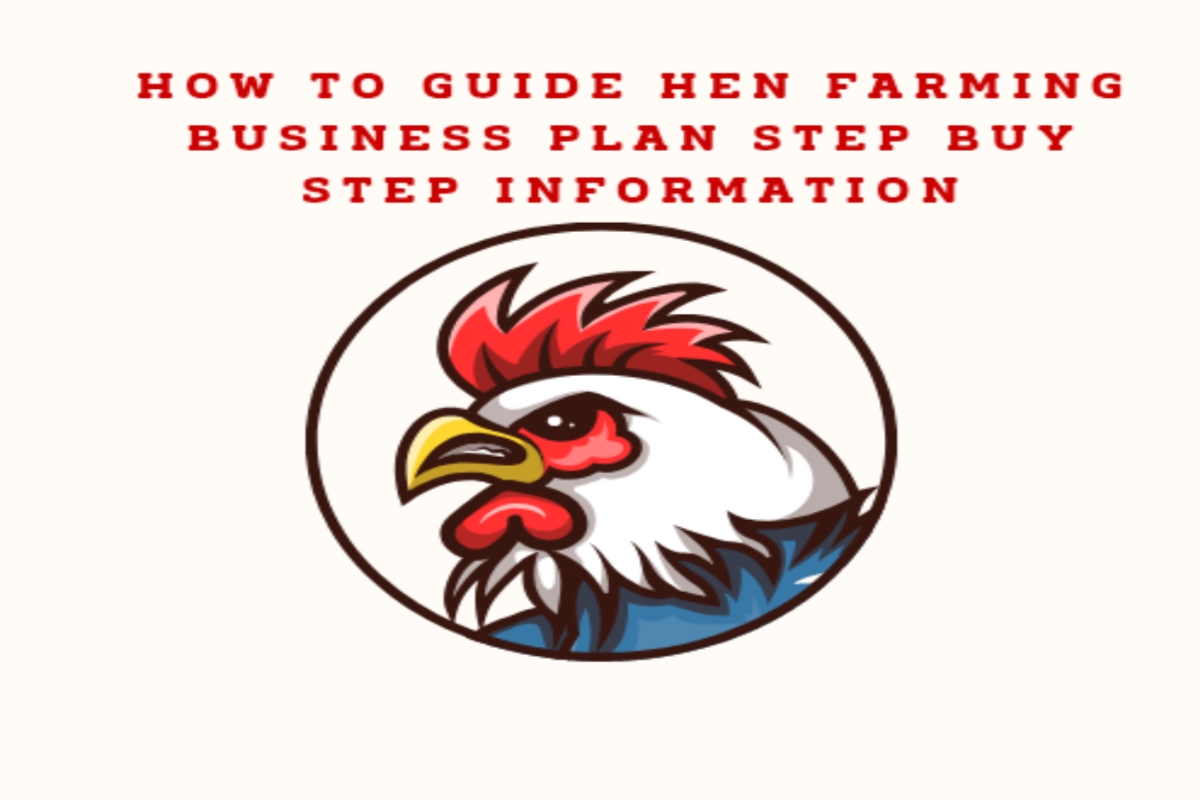Step-by-Step Guide to Creating a Hen Farming Business Plan
Table of Contents
- Introduction to Hen Farming
- Why Start a Hen Farming Business?
- Step 1: Market Research and Feasibility Study
- Industry Overview
- Target Market Analysis
- Competitor Analysis
- Step 2: Business Structure and Legal Requirements
- Choosing a Business Model
- Legal Registrations and Permits
- Step 3: Location Selection and Infrastructure Setup
- Ideal Farm Location Criteria
- Housing and Equipment Requirements
- Step 4: Operational Plan
- Sourcing Chicks and Breeds
- Feeding and Nutrition Management
- Health and Biosecurity Measures
- Step 5: Financial Planning and Budgeting
- Startup Costs
- Operational Costs
- Revenue Projections
- Step 6: Marketing and Sales Strategies
- Branding and Packaging
- Distribution Channels
- Step 7: Sustainability and Waste Management
- Step 8: Risk Management and Contingency Planning
- Step 9: Growth and Expansion Opportunities
- Conclusion
- Resources and Further Reading
1. Introduction to Hen Farming
Hen farming, or poultry farming, is a lucrative agribusiness venture focused on raising chickens for eggs, meat, or both. With rising global demand for protein-rich food, poultry farming has become a cornerstone of food security. This guide provides a detailed roadmap to create a robust business plan for a sustainable and profitable hen farming operation.
2. Why Start a Hen Farming Business?
- High Demand: Eggs and poultry meat are dietary staples worldwide.
- Quick Returns: Hens start laying eggs within 5–6 months.
- Scalability: Start small and expand as profits grow.
- Government Support: Many countries offer subsidies for agribusinesses.
3. Step 1: Market Research and Feasibility Study
Industry Overview
- Research the poultry industry in your region.
- Analyze trends (e.g., organic eggs, free-range farming).
- Global egg production exceeds 1.5 trillion annually, with Asia leading the market.
Target Market Analysis
- Identify buyers: Households, restaurants, supermarkets, or wholesalers.
- Understand pricing preferences (e.g., premium for organic products).
Competitor Analysis
- Study local farms’ strengths and weaknesses.
- Identify gaps (e.g., underserved demand for specialty eggs).
4. Step 2: Business Structure and Legal Requirements
Choosing a Business Model
- Egg Production: Focus on layer hens.
- Meat Production: Raise broilers.
- Dual-Purpose: Combine eggs and meat.
Legal Registrations and Permits
- Register your business (sole proprietorship, LLC, etc.).
- Obtain licenses:
- Poultry farming permit.
- Environmental clearance (for waste management).
- Food safety certifications (e.g., FDA, ISO).
5. Step 3: Location Selection and Infrastructure Setup
Ideal Farm Location Criteria
- Proximity to markets to reduce transportation costs.
- Access to clean water and electricity.
- Zoning compliance (avoid residential areas).
Housing and Equipment Requirements
- Coop Design:
- Allow 2–3 sq. ft. per hen.
- Ensure ventilation and insulation.
- Equipment:
- Feeders, drinkers, nesting boxes.
- Incubators (if hatching chicks).
- Waste disposal systems.
6. Step 4: Operational Plan
Sourcing Chicks and Breeds
- Choose breeds based on purpose:
- Layers: Rhode Island Red, Leghorn.
- Broilers: Cobb 500, Ross 308.
- Buy from certified hatcheries to ensure quality.
Feeding and Nutrition Management
- Provide balanced feed (16–18% protein for layers).
- Supplement with calcium (for eggshell strength).
Health and Biosecurity Measures
- Vaccinate against diseases (Newcastle, Avian Flu).
- Quarantine new birds to prevent outbreaks.
- Clean coops weekly to reduce parasites.
7. Step 5: Financial Planning and Budgeting
Startup Costs (Sample Table)
| Item | Estimated Cost (USD) |
|---|---|
| Land Lease | $5,000–$10,000 |
| Coop Construction | $8,000–$15,000 |
| 500 Chicks | $1,500 |
| Feed and Equipment | $3,000 |
| Total | $17,500–$30,500 |
Operational Costs
- Feed (60–70% of expenses).
- Labor, utilities, and veterinary care.
Revenue Projections
- A layer hen produces 250–300 eggs/year.
- Selling 10,000 eggs/month at $0.20/egg = $2,000 monthly revenue.
8. Step 6: Marketing and Sales Strategies
Branding and Packaging
- Create a unique brand name (e.g., “GreenPasture Eggs”).
- Use eco-friendly packaging to attract eco-conscious buyers.
Distribution Channels
- Direct sales via farmers’ markets.
- Supply to grocery chains or restaurants.
- Explore online sales (e-commerce platforms).
9. Step 7: Sustainability and Waste Management
- Convert manure into organic fertilizer.
- Install solar panels to reduce energy costs.
- Recycle water for cleaning.
10. Step 8: Risk Management and Contingency Planning
- Disease Outbreaks: Insure your flock.
- Price Fluctuations: Lock in contracts with buyers.
- Natural Disasters: Build disaster-resistant coops.
11. Step 9: Growth and Expansion Opportunities
- Add value-added products (boiled eggs, egg powder).
- Export to international markets.
- Integrate technology (automated feeding systems).
12. Conclusion
A well-structured business plan is critical to succeed in hen farming. By focusing on market research, efficient operations, and strategic marketing, you can build a profitable and sustainable business.
13. Resources and Further Reading
- Books: The Small-Scale Poultry Flock by Harvey Ussery.
- Organizations: Food and Agriculture Organization (FAO).
- Tools: Financial calculators for poultry farms.
